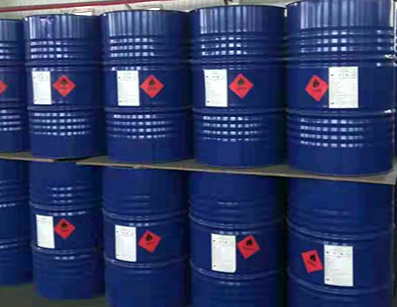Contact Us
Production method of THF
Views: 8 Author: Site Editor Publish Time: 2023-06-14 Origin: Site
Early in industrial production, sugar aldehyde was used as raw material. A mixture of sugar aldehyde and steam was introduced into a reactor filled with zinc chromium manganese metal oxide (or palladium) catalyst, and the carbonyl group was removed at 400-420 ℃ to form furan; Then, using skeleton nickel as a catalyst, tetrahydrofuran was prepared by hydrogenation of furan at 80-120 ℃. This method produces 1 ton of tetrahydrofuran, which requires approximately 3 tons of polysaccharide aldehyde. There are many production methods developed later, including the 1,4-butanediol catalyzed dehydration cyclization method, which is called the Reppe method because butanediol is produced from acetylene and formaldehyde; Tetrahydrofuran is produced from 1,4-dichlorobutene, a by-product of Neoprene monomer Chloroprene, which is called the dichlorobutene process; A catalytic hydrogenation method using maleic anhydride as raw material has been developed.
There are five production processes for tetrahydrofuran:
(1) Furfural method:
Furan is obtained by decarbonylation of furfural and hydrogenation.
This is one of the earliest industrial methods for producing tetrahydrofuran. Furfural is mainly produced by hydrolysis of agricultural by-products such as corn cob. This law has serious pollution and is not conducive to large-scale production, and has been gradually phased out.
(2) Maleic anhydride catalytic hydrogenation method:
Maleic anhydride and hydrogen gas enter the reactor with a nickel catalyst from the bottom, and tetrahydrofuran and γ- The proportion of butyrolactone can be controlled by adjusting operating parameters. The reaction product and raw hydrogen gas are cooled to about 50 ℃ and enter the bottom of the washing tower to separate the unreacted hydrogen gas and gaseous products from the liquid products. The unreacted hydrogen gas and gaseous products are washed and circulated to the reactor, and the liquid products are distilled to obtain tetrahydrofuran products. This process can be adjusted arbitrarily within the range of 0 to (5:1) γ- The ratio of butyrolactone to tetrahydrofuran, the one-way conversion rate of maleic anhydride reaches * *, the selectivity of tetrahydrofuran is 85% -95%, and the product content reaches 99.97%. This process has the characteristics of good catalyst performance, simple process, and low investment.
(3) 1,4-butanediol dehydration cyclization method:
The process involves adding 1087kg of 22% sulfuric acid aqueous solution to the reactor, adding 1,4-butanediol at a rate of 110kg/h at 100 ℃, maintaining the tower temperature at 80 ℃, and obtaining an aqueous solution containing 80% tetrahydrofuran from the tower at a rate of approximately 110kg/h. After adding 50t 1,4-butanediol, approximately 70kg of coke was removed from the reactor. By filtering the coke, the obtained sulfuric acid aqueous solution can be reused, and the yield of tetrahydrofuran in this process can reach over 99%. Sulfuric acid is an earlier catalyst used in the industrial production of tetrahydrofuran and is also a widely used catalyst in today's production. This process has mature technology, relatively simple process, low reaction temperature, and high yield of tetrahydrofuran. However, sulfuric acid is prone to corrosion of equipment and environmental pollution.
(4) Dichlorobutene method:
Using 1,4-dichlorobutene as the raw material, it is hydrolyzed to produce butene glycol, which is then obtained through catalytic hydrogenation. 1,4-Dichlorobutene is hydrolyzed in * * solution, and butenediol is generated at 110 ℃. Sodium chloride is removed by centrifugal separation. The filtrate is concentrated in an evaporative crystallizer to separate the alkali metal Carboxylate, and then the high boiling matter is removed in the distillation tower. The refined butene glycol is fed into a reactor, and nickel is used as a catalyst. At 80-120 ℃ and a certain pressure, the butene glycol is hydrogenated to produce butanediol. After distillation, it is fed into a cyclization reactor, and crude tetrahydrofuran is generated in an acidic medium at atmospheric pressure and 120-140 ℃. Distillation dehydration and high boiling removal are carried out to obtain high-purity tetrahydrofuran. This method is easy to operate, with mild conditions, high yield, and low catalyst dosage, and can be continuously used.
(5) Butadiene oxidation method:
Using butadiene as the raw material, furan is obtained by oxidation and then hydrogenation. This law has been industrialized abroad.






















